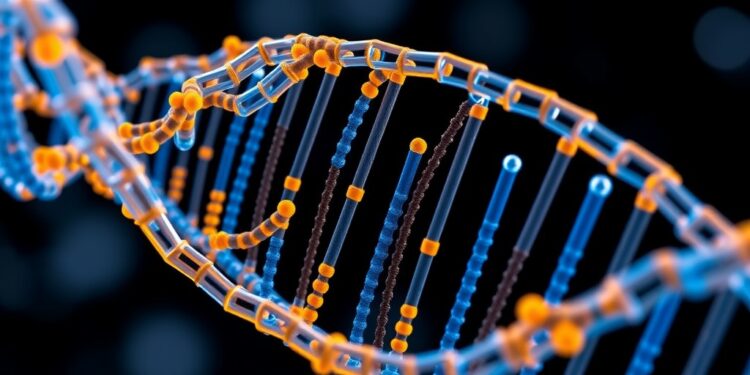A Groundbreaking Achievement in Synthetic Biology: The Completion of the First Synthetic Yeast Genome
In a significant advancement for the field of synthetic biology, researchers at Macquarie University, collaborating with an esteemed international team, have successfully created the final chromosome in the world’s first synthetic eukaryotic genome. This accomplishment marks a pivotal moment in the Sc2.0 project, aimed at engineering a synthetic version of Saccharomyces cerevisiae, commonly known as baker’s yeast. The project’s completion heralds a new era for metabolic engineering, offering unprecedented opportunities in biotechnology applications, from sustainable food production to pharmaceuticals.
Utilizing the latest genome-editing technologies, specifically the innovative CRISPR D-BUGS protocol, the team meticulously identified and rectified genetic errors that had previously hindered the growth of yeast strains. These corrections not only reinvigorated the yeast’s ability to thrive on glycerol—a crucial carbon source—but also enabled it to flourish at elevated temperatures. Such enhancements are essential as they allow for more resilient strains, ultimately contributing to the stability of supply chains for essential products amid climate change challenges and potential pandemics.
The findings were published this week in the esteemed journal, Nature Communications, casting light on how engineered chromosomes can be crafted, assembled, and refined to generate organisms with enhanced traits. Professor Sakkie Pretorius, Co-Chief Investigator and Deputy Vice Chancellor for Research at Macquarie University, expressed his enthusiasm, stating, “This is a landmark moment in synthetic biology; it is the final piece of a puzzle that has occupied synthetic biology researchers for many years now.” The culmination of this scientific endeavor not only exemplifies technical prowess but also sets a new standard in the discipline of synthetic biology.
Distinguished Professor Ian Paulsen, who co-led the project as the Director of the ARC Centre of Excellence in Synthetic Biology, emphasized the project’s significance. “The successful construction and debugging of the final synthetic chromosome has culminated in the establishment of a powerful platform that could revolutionize how we produce essential goods.” The research not only paves the way for advancements in synthetic yeast, but also lays the groundwork for future endeavors in genetic engineering across various organisms.
Through the deployment of specialized gene editing tools, the researchers diagnosed and resolved issues impacting the growth and reproductive capabilities of their synthetic yeast. A crucial finding was the interaction of genetic markers placed near certain gene regions. This unforeseen placement interfered with the activation and deactivation processes of vital genes, significantly affecting processes necessary for copper metabolism, which is crucial for the organism’s survival in variable conditions.
Co-lead author Dr. Hugh Goold, a research scientist at The NSW Department of Primary Industries and Honorary Postdoctoral Research Fellow at Macquarie University, highlighted the implications of their findings for future genome engineering projects. “Understanding how the positioning of genetic markers can disrupt the expression of essential genes provides critical insights that establish design principles applicable to other organisms,” he remarked. These insights are invaluable as they enhance our understanding of genetic architecture and its implications for synthetic biology.
Dr. Briardo Llorente, Chief Scientific Officer at the Australian Genome Foundry, remarked on the broader impacts of this ambitious project. He articulated that constructing such a large synthetic chromosome was feasible only due to the utilization of cutting-edge robotic instrumentation available at the Australian Genome Foundry. “This achievement unlocks exciting prospects for developing more efficient and sustainable biomanufacturing processes,” he stated, suggesting that the implications extend far beyond yeast to potentially benefit entire industries.
Moreover, the research team has provided critical frameworks for future synthetic biology projects, establishing a foundation for engineering plant and mammalian genomes effectively. The design principles derived from this research serve as guidelines that will assist researchers in avoiding disruptive genetic elements in their synthetic chromosomes, ensuring better outcomes in genetic modifications.
Macquarie University played a crucial role in the Sc2.0 project, contributing over 12 percent of the overall work. This monumental endeavor received support from various entities, including the NSW Government’s Department of Primary Industries, the Australian Research Council Centre of Excellence in Synthetic Biology, and external grants from Bioplatforms Australia and the NSW Chief Scientist and Engineer. Such collaborative efforts underline the importance of interdisciplinary cooperation in advancing scientific knowledge and capability.
The paper titled “Construction and iterative redesign of synXVI, a 903 kb synthetic Saccharomyces cerevisiae chromosome” was formally published in Nature Communications on January 20, 2025. The dissemination of these findings assures that the scientific community remains at the forefront of synthetic biology innovations, inspiring ongoing research and exploration.
This landmark achievement is not merely a scientific victory; it represents a critical turning point for future innovations in various fields. The engineering of organisms with desired traits holds the potential to transform industries, resonate throughout the global economy, and fundamentally change how we approach challenges in food supply, medicine, and beyond. The implications of this research will undoubtedly inspire a new wave of synthetic biology initiatives, pushing the boundaries of what is possible and improving the resilience of biological systems in an increasingly uncertain world.
In conclusion, the creation of the synthetic yeast genome epitomizes human ingenuity and determination in the realm of scientific exploration. With ongoing advances in genome editing and the iterative refinement of synthetic organisms, humanity stands on the brink of unprecedented opportunities. Future researchers and innovators will look back on this momentous occasion as a stepping stone towards a more sustainable and efficient future, founded upon the principles of synthetic biology.
Subject of Research: Synthetic Biology
Article Title: Construction and iterative redesign of synXVI a 903 kb synthetic Saccharomyces cerevisiae chromosome
News Publication Date: 20-Jan-2025
Web References: Nature Communications
References: DOI 10.1038/s41467-024-55318-3
Image Credits: Not available
Keywords: Synthetic biology, Genome engineering, Yeast genomes, Genetic diversity, Biotechnology.
Tags: biomanufacturingclimate resilienceCRISPR D-BUGSGenetic diversitygenome engineeringmetabolic engineeringpharmaceutical applicationsSaccharomyces cerevisiaeSc2.0 projectsustainable productionsynthetic biologysynthetic chromosomes





